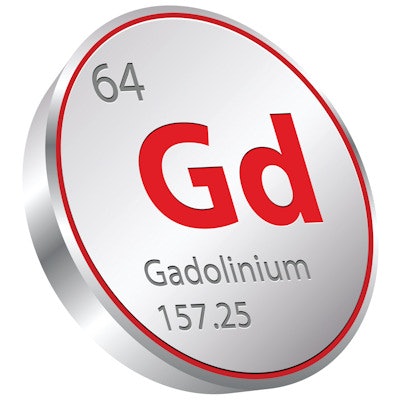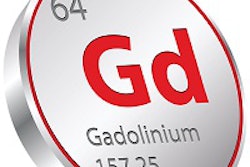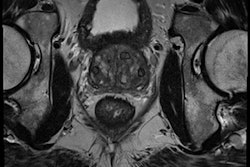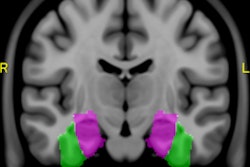
South Korean researchers have found levels of gadolinium in the Han River near Seoul that are almost 300 times normal levels at some locations. They attribute the levels to the use of MRI contrast -- echoing previous research on the persistence of gadolinium in the environment.
The level and distribution of gadolinium in the waters of the Han River and its tributaries roughly correlated with the number of MRI scanners in particular areas around Seoul, according to a research group from Chungnam National University in Daejeon and the Korea Basic Science Institute, Chungbuk.
"This result indicates a positive correlation between population and number of MRI instruments, and positive [gadolinium levels]," the authors wrote in a paper published December 29 in Chemosphere.
Checkered reputation
Gadolinium serves as a key raw material for most MRI contrast agents. While extremely useful for MRI scans, the rare earth element has developed a checkered reputation in recent years. It was linked to the development of nephrogenic systemic fibrosis in patients starting in 2006, and more recently, residual gadolinium has been found in humans years after they received MRI scans.
Gadolinium also makes its way into wastewater as patients excrete it from their bodies following MRI scans. Gadolinium's persistence in the environment has even spawned a new field of environmental research, such as a 2016 study of the element in San Francisco Bay. Researchers found high levels of gadolinium in the body of water, and these levels corresponded with the number of MRI scanners installed in the region.
In the current study, the researchers postulated that the Seoul metropolitan area could be a good region to investigate for environmental gadolinium, due to its large population (around 25 million people) and relatively high concentration of MRI scanners (21.3 units per 1 million population). The scanner concentration is much higher than the average for countries in the Organization for Economic Co-operation and Development (OECD).
The researchers collected 20 water samples from the Han River and its tributaries in August 2013. Some samples were collected at pristine spots in upper tributary streams before they flow into the Seoul metropolitan area, while other samples were collected from more populated locations, such as the effluent from wastewater treatment plants (unlike other rare earth elements, gadolinium is not removed from water in the wastewater treatment process).
The researchers measured the chemical composition of the water samples and performed a process designed to isolate rare earth elements such as gadolinium, lanthanum, and samarium. Concentrations were rendered as picometers (pM), and prevalence was compared with normal levels as found in a type of Australian shale that in geology is considered to be a standard for the presence of rare earth elements.
Gadolinium concentrations rose when water samples were acquired near populated areas -- areas that had higher concentrations of MRI scanners, the group found. The levels ranged from 1.2 times the normal levels of gadolinium in the environment to as high as 297 times the normal levels.
For example, at the upper end of the Han River, near the Paldang Dam above Seoul, gadolinium levels dropped from 44.0 pM at the first measuring station near the dam to 17.7 pM and 17.2 pM at the next two stations, as tributary streams fed the river. But downstream from Seoul, gadolinium concentrations rose sharply to as high as 181 pM at the first sample station downstream of the city.
Meanwhile, gadolinium levels were far lower in upstream tributaries of the Han River, with one tributary seeing levels ranging from 2.29 pM to 41.0 pM. On the other hand, some downstream tributaries had extremely high levels: A station located next to a tributary that drained an area with a high concentration of MRI scanners had a gadolinium level of 425 pM.
Levels skyrocketed when measured at sources near wastewater treatment plans. One station near the inflow of such a plant recorded a gadolinium level of 3,710 pM, or 297 times the normal gadolinium concentration in the environment, while other stations recorded levels of 781 pM and 756 pM.
| Levels of environmental gadolinium in Han River | ||
| Measuring station | Gadolinium concentration | Level times normal |
| Upstream tributary 1 | 2.29 pM | 1.21 |
| Upstream tributary 2 | 4.64 pM | 1.34 |
| Han River 1 | 44.0 pM | 2.49 |
| Han River 2 | 17.7 pM | 1.79 |
| Han River 3 | 17.2 pM | 1.57 |
| Han River 4 | 104 pM | 4.82 |
| Han River 5 | 181 pM | 8.17 |
| Han River 6 | 116 pM | 6.87 |
| TAW wastewater plant | 3,710 pM | 297 |
"The results indicate that the [Han River] is significantly contaminated by anthropogenic [gadolinium] sources, which are contrast agents from MRI," the authors wrote.
They reported that gadolinium levels correlated with population levels (and therefore the number of MRI scanners) in the upstream samples, but this relationship was not found in the downstream samples, indicating that wastewater treatment plants may disrupt the association.
Ultimately, the researchers found that the anthropogenic gadolinium most likely follows the Han River into the Yellow Sea, where it could disturb the rare earth distribution in the water and potentially "pose harmful effects on aquatic ecosystems."



.fFmgij6Hin.png?auto=compress%2Cformat&fit=crop&h=100&q=70&w=100)




.fFmgij6Hin.png?auto=compress%2Cformat&fit=crop&h=167&q=70&w=250)











